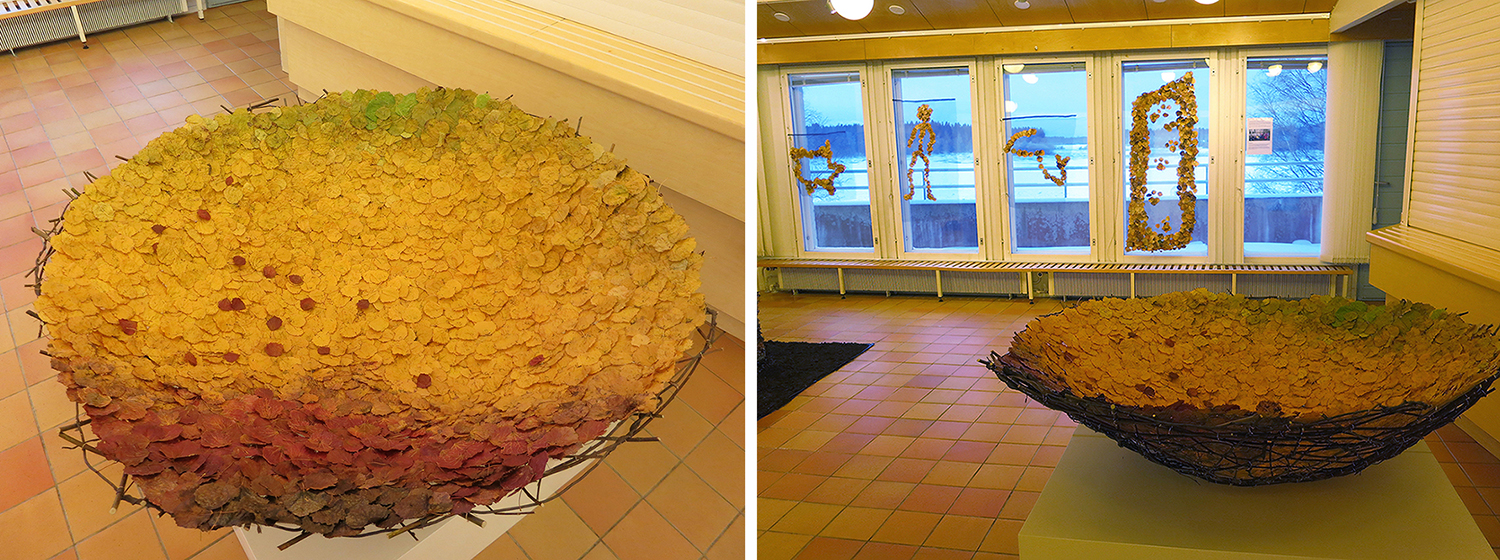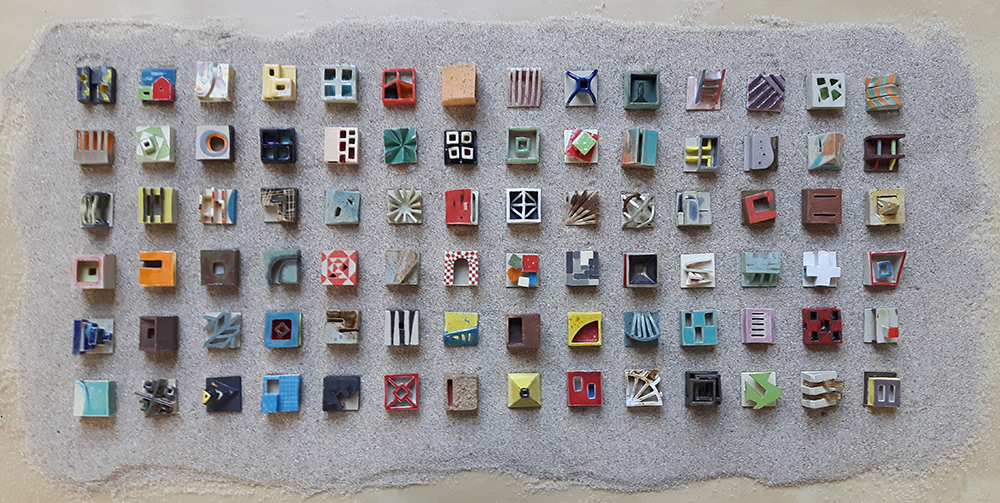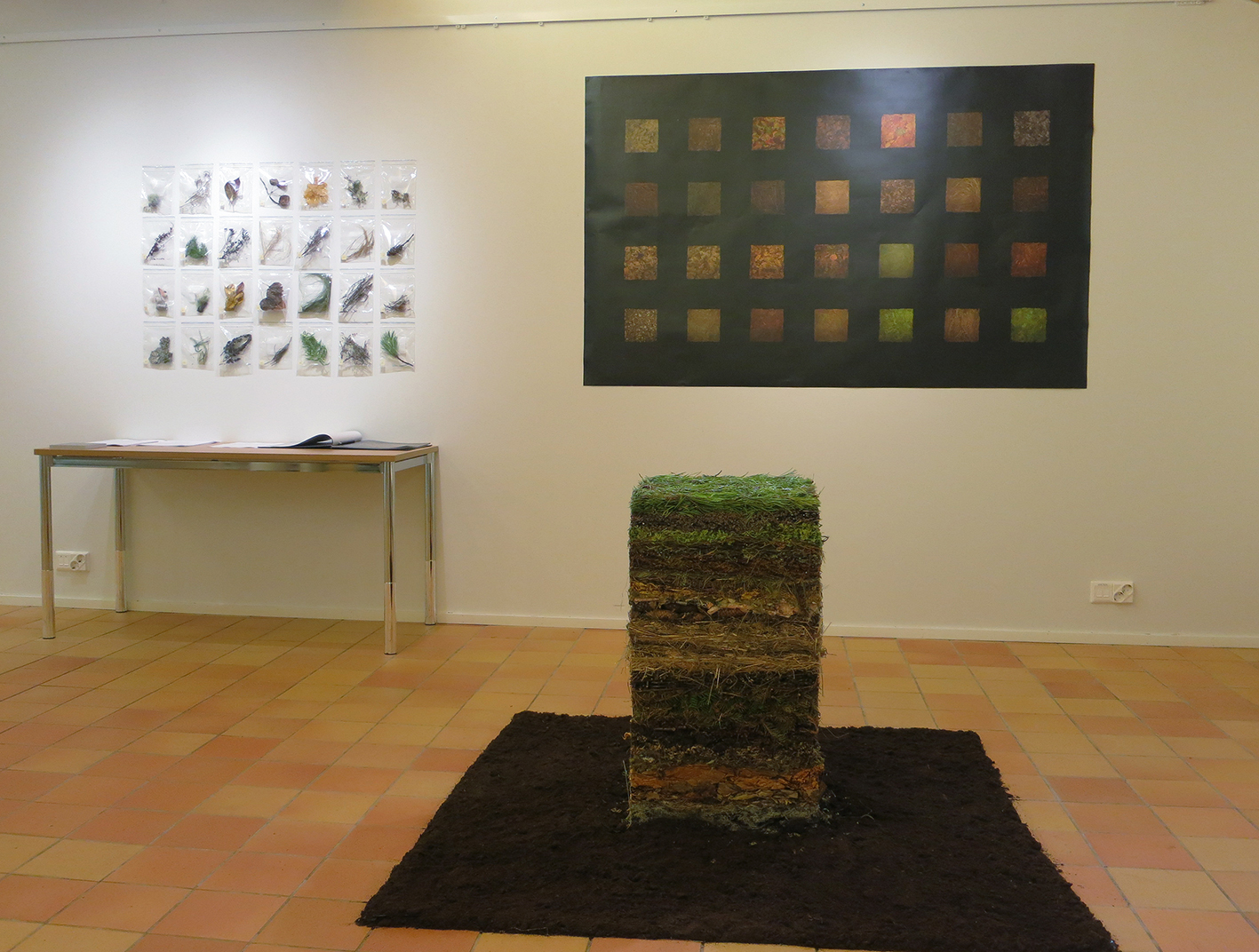Featured Artist/Traveler - Barbara Tong
Barbara Tong in residence at Swatch Art Peace Hotel in Shanghai 2015
Barbara Tong is a mixed media artist originally from Hong Kong and now based in London. She has been a full time artist since graduating with a degree in Fine Art in London in 2011. Her love of travel, in particular to artist residencies, has brought her to such countries as Peru, Japan and Finland where she has lived, worked and exhibited. Read on to hear more about her life and work:
——————————————————————————————-
Hello Barbara - thanks for sharing your unique story with us! Your first degree was not in art but in Actuarial Science - what is that and when did you know you wanted to pursue art?
Actuarial Science is a discipline that applies mathematical and statistical methods to assess risk in mainly the insurance and finance industries. I love maths and it’s always been my best subject. I also love art but wasn’t able to take it for my GCSEs. When I did my first degree, I used to walk past an art school almost everyday and they displayed their students’ works on the windows and I would think “Oh, I wish I could do something like that one day!”.
Floral design by Barbara Tong
After I returned to Hong Kong, life was a bit stressful, so I decided to take up a new hobby. I didn’t know why, but I decided to learn flower design; it was back in 2002. I was very lucky, my teacher was very inspiring; it was more than flower arrangement, more like making sculpture/ installation using botanical materials and I fell in love with this art form immediately. Still I wasn’t sure if I was good enough to pursue art.
Not until 2006 when I won my first international award in flower design in Japan, I thought, maybe I should at least give it a try! So, I prepared a portfolio and sent it to the art school (same one that I used to walk pass everyday) and was accepted to do a foundation course, and that’s how it all started.
You work in many different mediums - tell us about how you decide on the materials you use and why. What inspires your choices?
Yes, I don’t have a fixed medium and normally the idea comes first and then I would think what is the best way (and medium) to present that idea. My inspirations come from the environment and the people I meet.
What is the overarching reason for you being an artist, and how would you describe your creative philosophy?
For me, it’s to have a better understanding of myself and hence to become a better person. I get my inspirations from my surroundings. Each place is unique and we all respond so differently. Every slight change in the environment has an effect on all objects within; how we feel and how we react, hence my work changes accordingly depending on where I am. It is about my responses, a reflection of how I feel about the place. I consider it a collaboration between me, the space I am in and the objects around, both tangible and intangible – an organic dialogue between us. It is about an exploration of the relationship, the connection and the contradiction between the imaginary/ our inner body space and the space around us; how the two mirror and affect each other.
Installation work at her residency in Finland
When you have an exhibition, do you first propose an idea or theme and then decide on the materials, or how does that evolve?
It depends really. Sometimes I might already have existing work, so that’s easy, but sometimes only an idea. Recently I had an exhibition with 2 friends; we decided not to bring any actual work, we just brought in materials and we would use those materials to make work in the space and respond to each other’s work. That was really fun and challenging.
You have shown your work in Japan, Peru and Finland. How do you organize international exhibits?
Normally I have a residency and then an exhibition at the end, so I would talk to the organizer (of the residency) and they would help to arrange it or point me in the right direction. But sometimes, also via open calls, invitation, etc.
Many artists have different ways they generate income. Do you support yourself completely with your art - or do you teach, etc, or have other means of income?
Hahaha, no! I think maybe less than 0.1% artists can support themselves completely with their art. I did a bit of teaching (in flower design) before, but then it’s impossible with all the traveling. But I do have other income, and thank god for that.
When was your first call to travel? How did it shape your future travels?
My first travel experience… I am sure it’s when my parents took us on holiday but I seriously can’t remember, and that’s probably more like holiday than to travel. I think the first time I would call it “to travel” was when I was 30, I got really sick about my job, so I left my job and bought myself a round-the-world ticket, and I traveled with my backpack for months. Basically, I had a rough itinerary, I fixed all the destinations but I didn’t fix the dates, so I could spend a long time in one place.
I think my travel habits are changing, gradually, all the time. When I was younger I liked to go to places that I had never been and try different things. Now I like to spend time in one place, try to understand and learn about different cultures and their traditions, dig up the stories… I think people need different things in different stages of their life, that’s the same for traveling.
Ceramic work created in Peru
How did you first hear about artist residencies?
I was in the first year of my study (in fine art). Our tutor told us about this residency for students, up in Yorkshire. It was a very short one, only 1 week, but it gave me a taste of what a residency is like.
Do you have any idea of what you will do before you arrive at a residency, or do you respond once you get there? And how do you travel with your materials or do you use things you find along the way?
Usually I don’t have any idea of what I will be doing before I arrive, so I don’t carry any materials. Actually, I carried a lot of materials with me when I went to my first residency in Finland. It was kind of stupid as I didn’t know what I would make, but I carried a lot of wires, that’s the materials I used a lot of during that time. I ended up using maybe 0.01% of the wire I brought, so when they asked me if I would like to run some workshops, I decided to show them different ways of using wire, and gave them all the wires.
After that, I decided not to bring any materials, but I always carry some small tools, like pliers, cutters, etc. Recently I developed this project titled Cityscape, which is a series of mini sculptures in ceramics inspired by the architecture of that particular city. I wanted to do it in different cities. I first did it in Lima earlier this year and I am making a Kyoto version in Japan now. So I guess for my future residencies, I probably will carry my ceramic tools and some underglaze with me.
What kind of projects do you apply with and are the projects related to that particular residency?
Projects are normally about how I feel about the place and/or the people I met, so other than the Project Cityscape I mentioned above, other projects I developed during my previous residencies, I had no Idea what they would be before I got there. And I really like working that way because those are my genuine responses.
Tell us about some of the residencies you’ve been to and why you chose those particular places.
Well, I have to say I have been very lucky with all my residencies so far; they are all very nice and special in different ways. There are a lot of residencies around the world so I set some criteria…
1st – Places I want to go. Normally I would do the residency first then stay a bit longer to travel around. Work hard and play hard later.
2nd – Cost! There are residencies that asked you to pay crazy money, that you might as well rent your own place and do some work there. There are also residencies that paid you, but those are highly competitive and I am relatively new so, I don’t think I am ready for those. I have set an amount that I am willing to pay, and I will also go for the free ones and the ones come with small grant.
3rd – Most importantly, if I can see myself fit in that environment.
Exhibition in Finland
My first residency was at an art centre in a small town Ii, in Finland. As much as I loved using botanical materials for my work back then, I never had the chance of working in a forest/ rural environment before that. I had been to Finland once, but only to Helsinki, I saw images of its countryside and it was amazing. I had to pay 400euro/ month, but that included a spacious apartment and studio; plus they offered me the opportunity to teach and I got paid for that!!
Also before I applied, I checked their website and looked at the work from the local artists from the centre as well as the work from the previous resident artists, and I liked them. As they only accepted 1 artist at a time, they really tailor-made the residency to suit your needs; like if you want an exhibition at the end, or even have the exhibition in the bigger city. Ii is in northern Finland, so I also travelled to the Lapland, went to Santa Claus Village… and the northern lights came in free!!
Give us an example or 2 of how the environment of a residency shaped the work you did there and also after the fact.
I was doing a 2-months’ residency at Shiro Oni Studio in a small town in Onishi, Japan. Onishi is surrounded by mountains, it was once an important town during the old days when silk trade was still an important industry. But now, like many small old towns in Japan, it’s population is decreasing as young people decided to move to bigger cities for better jobs. However, when I got there, I felt there was a very strong sense of community, and the people were trying to revitalize their town.
Onishi, Japan.
So I knitted a net made up of 5,860 sections, the same number as the population in Onishi at that time. The work was installed during an art festival, and I invited visitors to pour paint onto the net. I chose 12 different colours of paint and based on research, each colour has a different meaning. (Red = Love, Blue = Hope, etc), and the action of pouring the paint onto the net acted as a gesture of giving their blessing to the town and its people.
I really had a great time there. Other than just making art, they organized a lot of activities, such as the Japanese tea ceremony, catching fish in the river, indigo dyeing, organic farming, etc. It gave me a taste of rural life in Japan.
After Onishi, I went to Shanghai for a 6-months’ residency at the Swatch Art Peace Hotel. It was a huge contrast, and unlike Onishi where I had an idea after the first few days I arrived, it took me almost 3 weeks before I came up with an idea. Shanghai is such a busy metropolis, so many things happening at the same time, so I was overwhelmed. During those first 3 weeks, I spent most of my time walking around the city. The residency itself is located in the city centre and it is really packed. As I walked around, there were a lot of people talking on the street, like some sort of modern music; and when I looked at the buildings, I could imagine it like a Chinese medicine chest with a lots of drawers.
Also, when I first arrived, I couldn’t get access to Google, Youtube, Facebook, etc as they are banned in China, but of course later on, I was told by other people how to get access to them. But the idea that things are controlled and that some things shouldn’t be talked about was kind of obvious.
Anyway, all these things came to mind and I found this old Chinese wooden window frame with grids, and I made small ceramic drawers that fit into the grids. At the back of each of the drawers, there is a code, which represents a musical note. The distribution of the notes is based on the demographic of Shanghai, ratio of male and female, and their vocal range. I preset a rhythm and tempo, and had someone to develop the software.
Shanghai Rhapsody
So, there is a camera/ scanner to read all the codes and translate that into musical notes, and depending on how you arrange these drawers, each time there is a different tune. The idea is that each one should have their own voice and all together, it’s a harmony.
It was the first major project that I created in ceramics, as I like the idea that the material will shrink after firing. It’s like we need to adjust ourselves in order to fit into the society.
What do you think are the best and most challenging things about residencies.
The best things about residencies… well, I think the list can go on forever, but if I really have to pick one thing, then it’s the people you meet, not just the people from the residency but the local people as well. As for the most challenging thing… can I say it’s the people as well?!
What advice would you give to others who want to apply to residencies?
Normally you need to apply a year ahead, so you need to plan ahead. I met a lot of artists that kept on saying “oh, I really want to do this residency but I don’t know my schedule yet…”. I think it’s important to put things into action, rather than just talk about it. Remember in most cases, you can adjust your residency period after you have been accepted. Also, do the research about the organizer, the place, and other artists that had been there. Websites such as www.transartists.org, www.residencyunlimited.org are a good source.
Barbara working at Shiro Oni Studio, Japan
Any other thoughts for our readers?
If you are an artist, and haven’t done any residencies, then please try it, at least once. It’s really amazing how much you can get out from it. Usually I prefer to do a residency that lasts for a minimum of 3 months, so that I can really spend time to explore and to understand the place.
You can see more of Barbara’s work at : http://www.barbaratong.com/
https://www.instagram.com/barbara_tong/
To learn more about how to attend an artist residency, click the button below:













